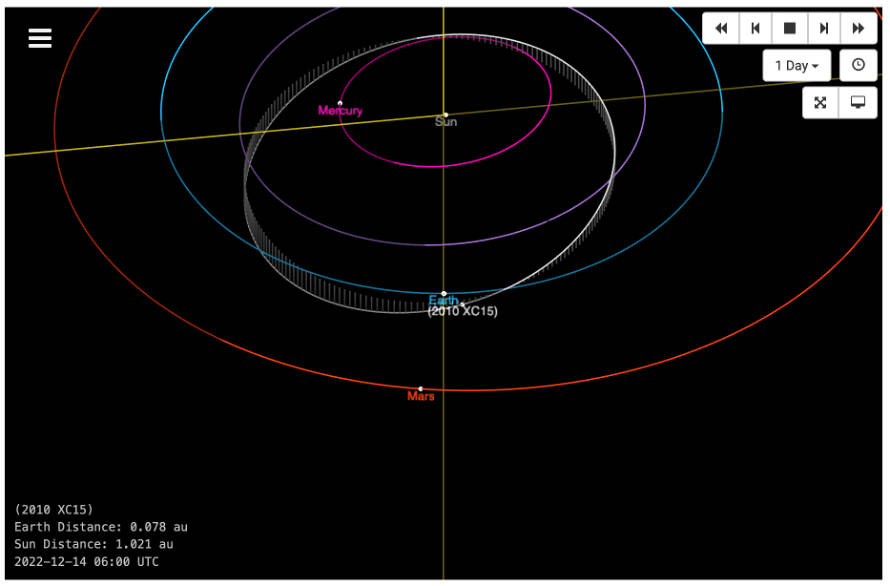KENAI —A research site in Alaska is partnering with the National Aeronautics and Space Administration to send a radio signal to an asteroid, the University of Alaska Fairbanks’ Geophysical Institute recently announced.
In Gakona, located in the Copper River area northeast of the Kenai Peninsula, the High-frequency Active Auroral Research Program’s research site will be used to bounce a radio signal off asteroid 2010 XC15. HAARP was developed by the United States Air Force, but transferred to the University of Alaska Fairbanks in 2015.
That signal will be received by the University of New Mexico’s Long Wavelength Array near Socorro, New Mexico, and the Owens Valley Radio Observatory’s Long Wavelength Array near Bishop, California.
The purpose of the experiment is to probe the interior of the asteroid, NASA investigator Mark Haynes explained in a news release from UAS. This will allow the scientists to learn the distribution of mass, information useful for defending against an asteroid impact.
NASA has a long history of detecting and mapping asteroids using telescopes and radar, but using longer wavelength signals to map the insides is a new development.
The HAARP will transmit a signal around 9.6 megahertz at two-second intervals. That signal will travel farther than the distance to the moon to reach the asteroid. The resulting signal will be recovered in New Mexico and California and interpreted to learn more about the makeup of the body.
Tuesday’s test of the system follows tests earlier this year conducted at the moon, and is itself only preparation for a repeat of the process on a much larger asteroid that will pass by Earth in April of 2029.
That asteroid, named Apophis, is predicted to pass within 20,000 miles of Earth, thousands of miles closer than geostationary satellites and around 200,000 miles closer to Earth than the moon. Apophis is nearly four football fields across, with a diameter of around 1,100 feet. The release says that at one time the asteroid was thought to be a threat to Earth — though predictions have evolved and the threat was disproven.
The release explains that asteroids hit the earth every year, though most are so small that they simply burn up. NASA has long worked to find ways to mitigate risk of a more significant collision, such as through the development of other technologies that have successfully redirected small asteroids. Use of radio signals for interior sensing is planned for continued use in the coming years.
“If we can get the ground-based systems up and running, then that will give us a lot of chances to try to do interior sensing of these objects,” Haynes says in the release. In 2019, 80 known asteroids passed between the moon and Earth.
““HAARP is excited to partner with NASA and (Jet Propulsion Laboratory) to advance our knowledge of near-Earth objects,” said Jessica Matthews, HAARP’s program manager, in the release.
More information about the experiment and about HAARP can be found via the University of Alaska Fairbanks’ Geophysical Institute at gi.alaska.edu and at haarp.gi.alaska.edu.
• Contact reporter Jake Dye at jacob.dye@peninsulaclarion.com.

